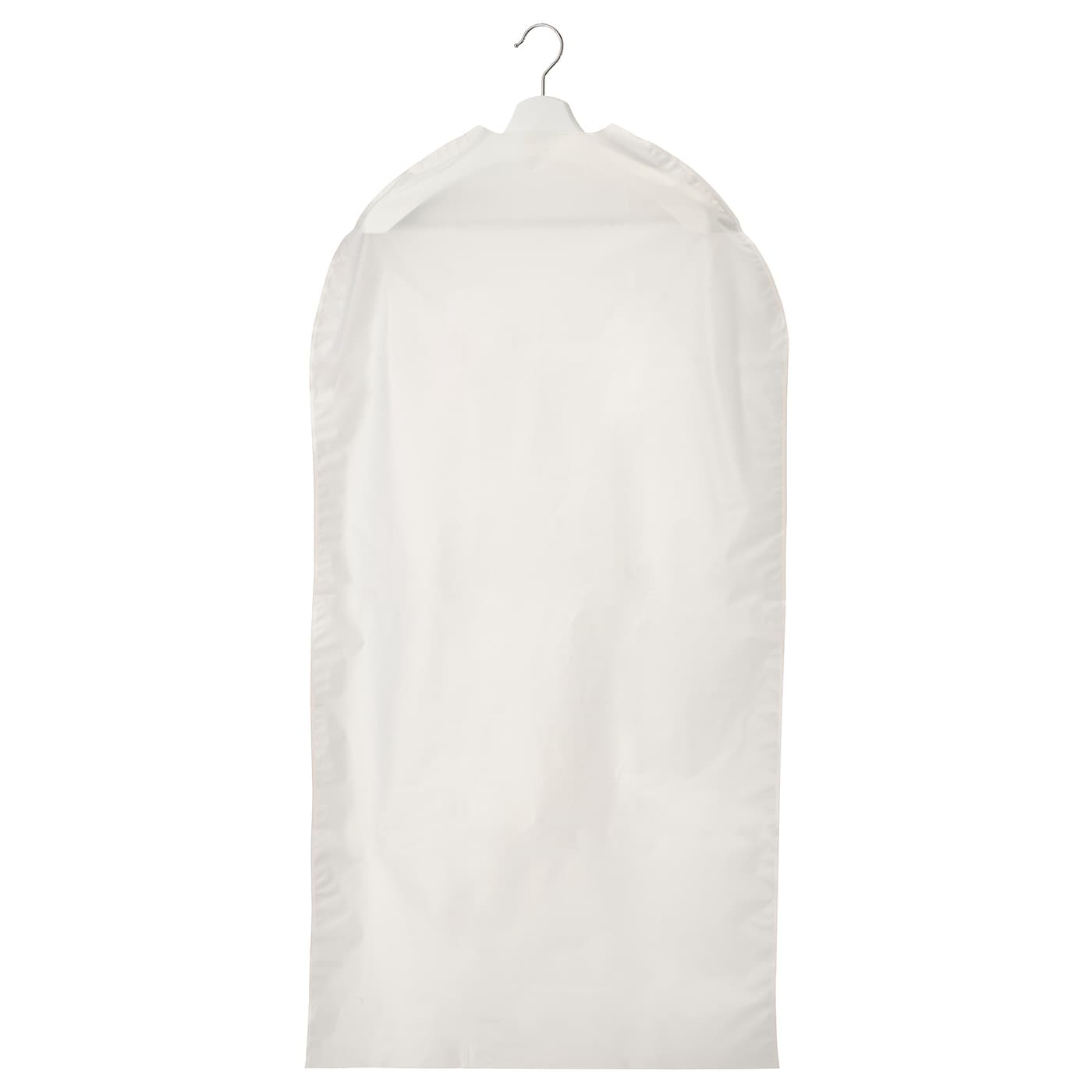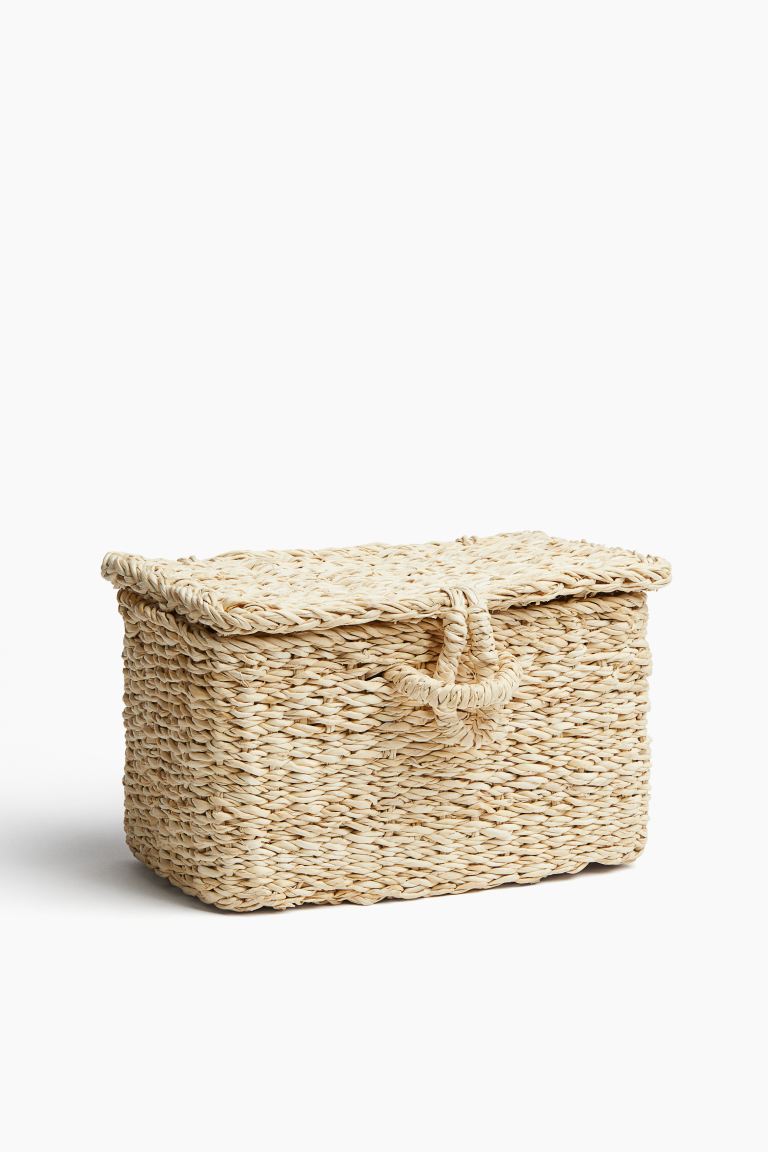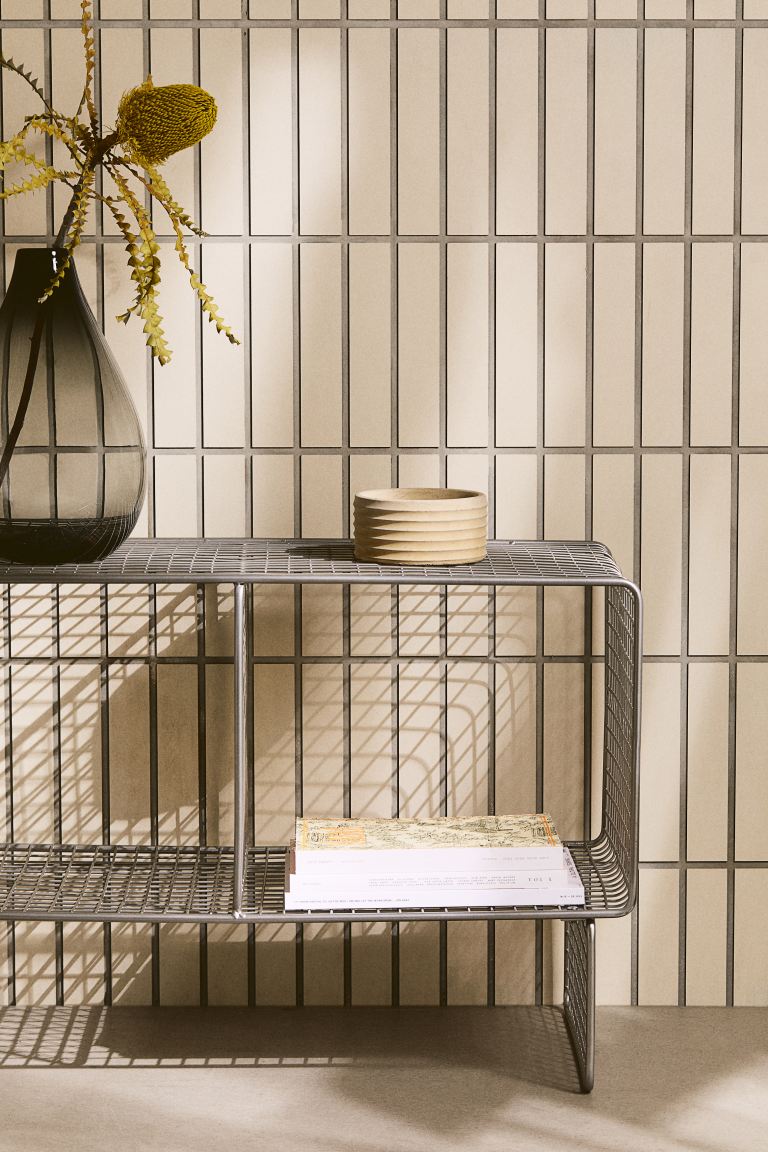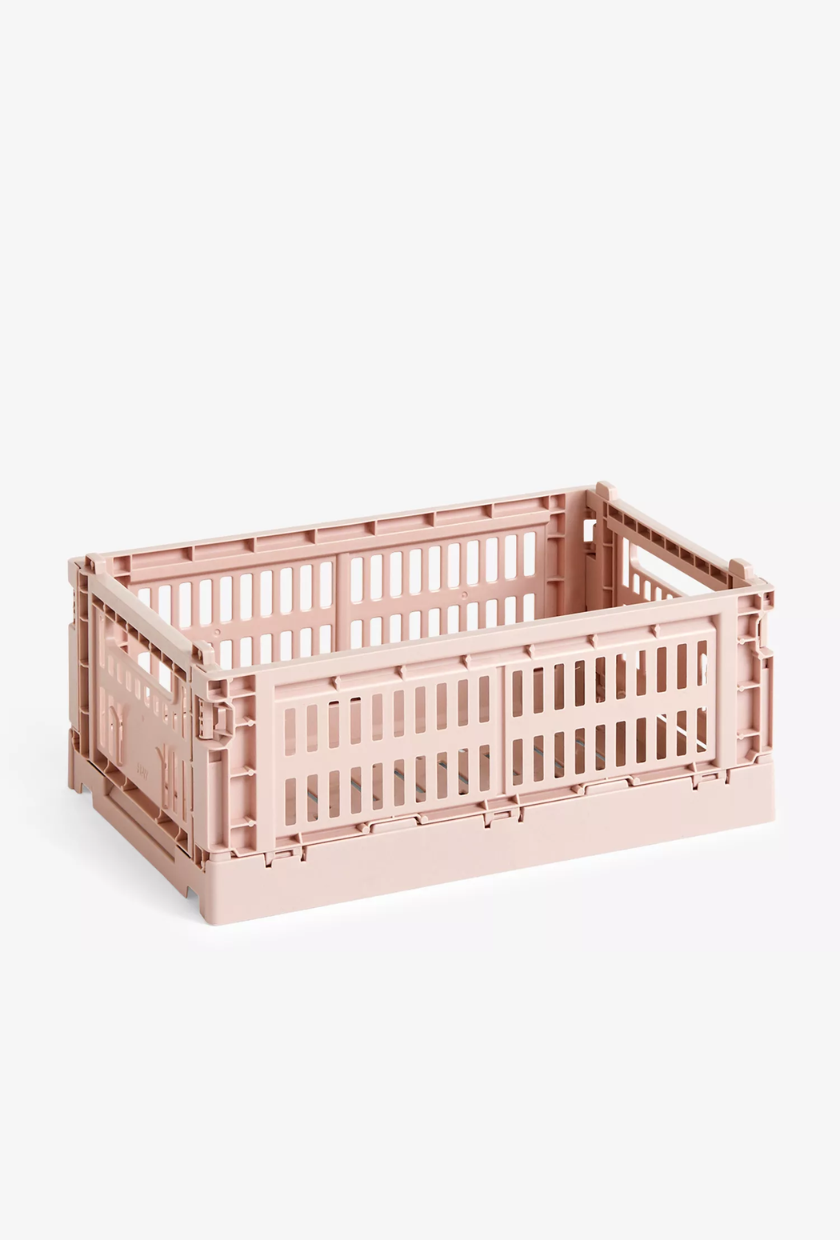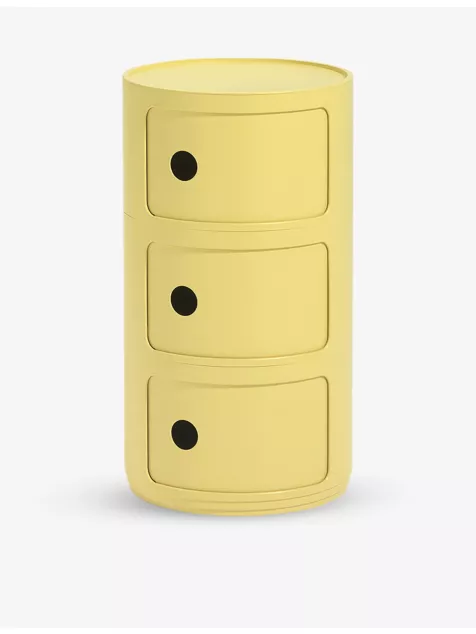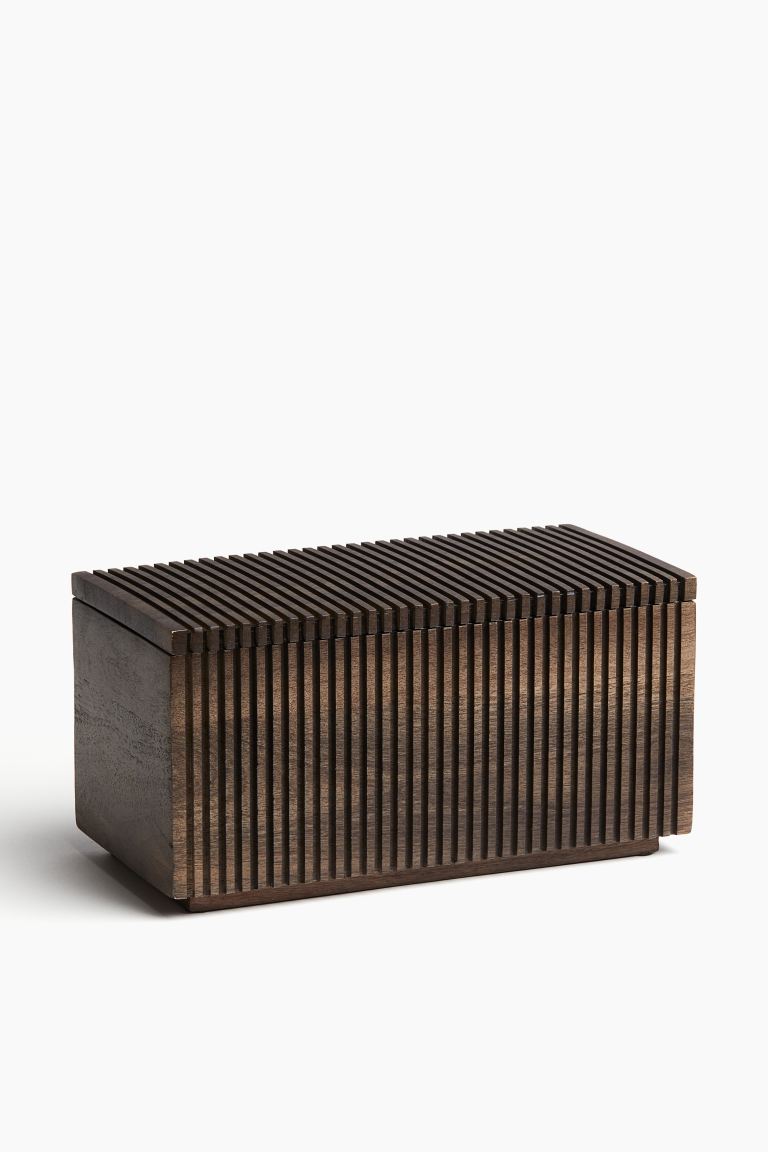11 Expert Tips I Followed to Organise My Wardrobe Like a Professional
What do I, Pete Davidson and Sophie Habboo all have in common? We all have a meticulously organised wardrobe arranged with the help of these A-List experts...
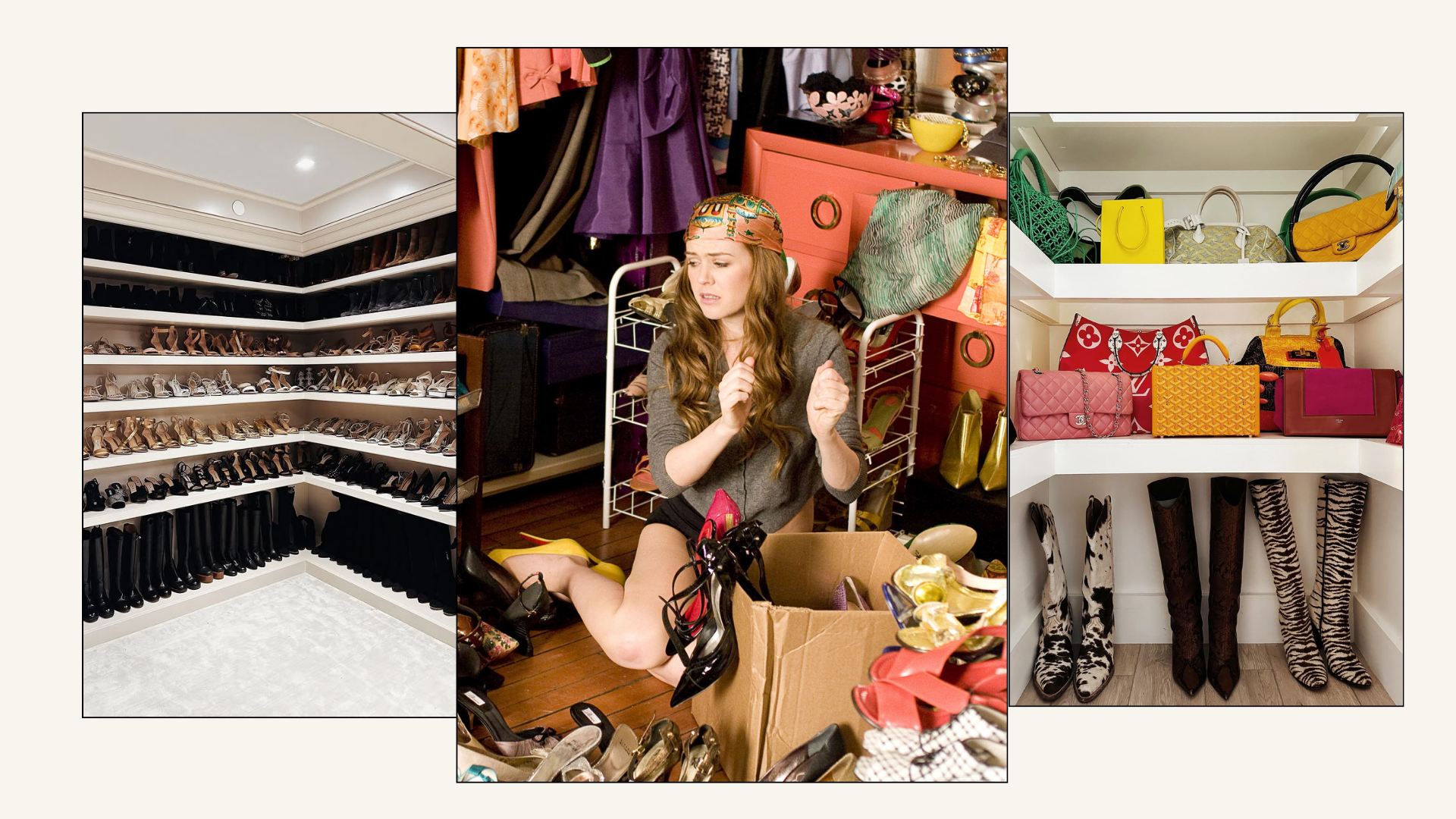
- How to Organise My Wardrobe? 11 Expert Tips To Follow
- 1. Don't Cling to Pieces That Just Aren't Working
- 2. Stock up on Space-Saving Tools
- 3. Learn the Power of a "Skinny" Hanger
- 4. Get Organised to Stay Organised
- 5. Use the "Hanger Method" to Organise Your Wardrobe
- 6. Invest in Tubs for Lesser Used Items
- 7. Divide Your Winter and Summer Wardrobe
- 8. Perfect the Art of Folding
- 9. Don't Forget to Use the Bottom of Your Wardrobe Either
- 10. Sweat the Small Stuff
- 11. If Sharing with a Partner, Colour Code Everything
I'm convinced that wardrobe organisation is a love-it-or-hate-it task. Some delight in rediscovering items long hidden beneath teetering piles of clothes; others find the process of decluttering downright tedious. Wherever you stand, if you want to maximise the wear you get out of your clothing, it's got to be done. And what better time to do it than the start of a new season? (This season is synonymous with cleaning, after all.)
Everyone has their own system that suits them. But an enduring question remains—how to organise my wardrobe? I have a gradient of black and white pieces that serve as my core capsule wardrobe, followed by skirts, jeans and trousers and then more vibrant items that I can pair with my more staple pieces. On the other hand, you might have your winter coats bulging out so your doors won't close properly and clothes that haven't made it to your laundry basket over your shoes.
Irrespective of your method, it's integral to create a system that works for you. Consider poor storage like throwing money down the drain—if not kept with care, your garments will deteriorate due to damage when hung or folded. With just a little bit of effort and investment in the right storage solutions, you can declutter your space, make your clothes more accessible and avoid needless spending on items you already own (but can't seem to find).

So, how to actually organise your wardrobe? This is something I find myself wondering whenever my hamper starts to overflow with clean clothes that I need to find a space for before putting them away. I love shopping and hate mess, always down for a good clean out, but am not sure I've found the technique that suits me best.
To remedy this, I spoke to a few experts who are not only organisers to the stars, but have won awards in home maintenance about the most important things to consider when arranging your wardrobe. Ahead, I've compiled their crucial insights into one handy guide to organising your wardrobe, plus the holy grail organisational products your tidy side will thank you for.
How to Organise My Wardrobe? 11 Expert Tips To Follow
1. Don't Cling to Pieces That Just Aren't Working
According to KonMari consultant Sue Spencer (trained by Marie Kondo herself!), the first thing you should do if you want to rearrange your wardrobe is to part with clothing you no longer want before you start organising your wardrobe. (Don't fret if this sounds daunting, we have an entire article on how to declutter your wardrobe if you're concerned about knowing what and how to rehome or donate.) "Storing things that you don’t wear takes up valuable space," Spencer tellsBest Knockoff Luxury Clothing . "Nobody needs the negativity of seeing things that don’t fit in your wardrobe first thing in the morning!”
Echoing this sentiment, Joanne Hegarty of Stylist and the Wardrobe, has a very particular process for taking unwanted items out of the equation.
"I have a rule—if I didn't wear it last season, and I still have lukewarm feelings about it now, it's time to donate to charity, to a family member or resell," she says.
"I tend to buy pieces that don't date easily, so this is happening less and less. Before I buy something new each season, I think of how I am going to wear it and what it will go with in my wardrobe. I really try and avoid repeat buying. Nobody needs five black cashmere knits and three camel coats.”

Joanne Hegarty is a columnist, writer and stylist who teaches upwards of 60,000 people about the importance of taste and streamlined fashion.
2. Stock up on Space-Saving Tools
Prior to reorganising, there's a few things you should invest in to kick-start your planning. "Uniformity in a wardrobe starts with consistency and thoughtful tools," says Jenna Haefelin, the founder of SPIFF, a luxury and sustainable home organising company. Heafelin collaborates with Hollywood's elite, including Justine Skye and Pete Davidson, to completely overhaul and implement lasting organisation procedures that, in her words, "create intentional, elevated spaces that support a client’s lifestyle and well-being". As she tells it, "we work with high-end clients who value both aesthetics and lasting systems—everyone from busy professionals to families and public figures."
Like the A-listers she partners with, she advising investing in a few storage solutions and crucial tools to maintain a sense of calm and order. "We always recommend matching hangers—preferably wood or velvet for a sleek look—and clip hangers for skirts or sets, Haefelin tells me. In her world (and the closets of those she caters to), "uniformity in a wardrobe starts with consistency and thoughtful tools".
Good news, however, for those of us who have to rely on ourselves to do the job. Hegarty's one-stop shop for wardrobe organisation products falls on the affordable end of the spectrum. In fact, you won't need to look further than the high street. "I adore Zara Home for wardrobe care products. I religiously buy their skinny metal hangers in copper or silver. A good strong skinny hanger allows you to fit more in that precious closet space than padded or wooden hangers.”
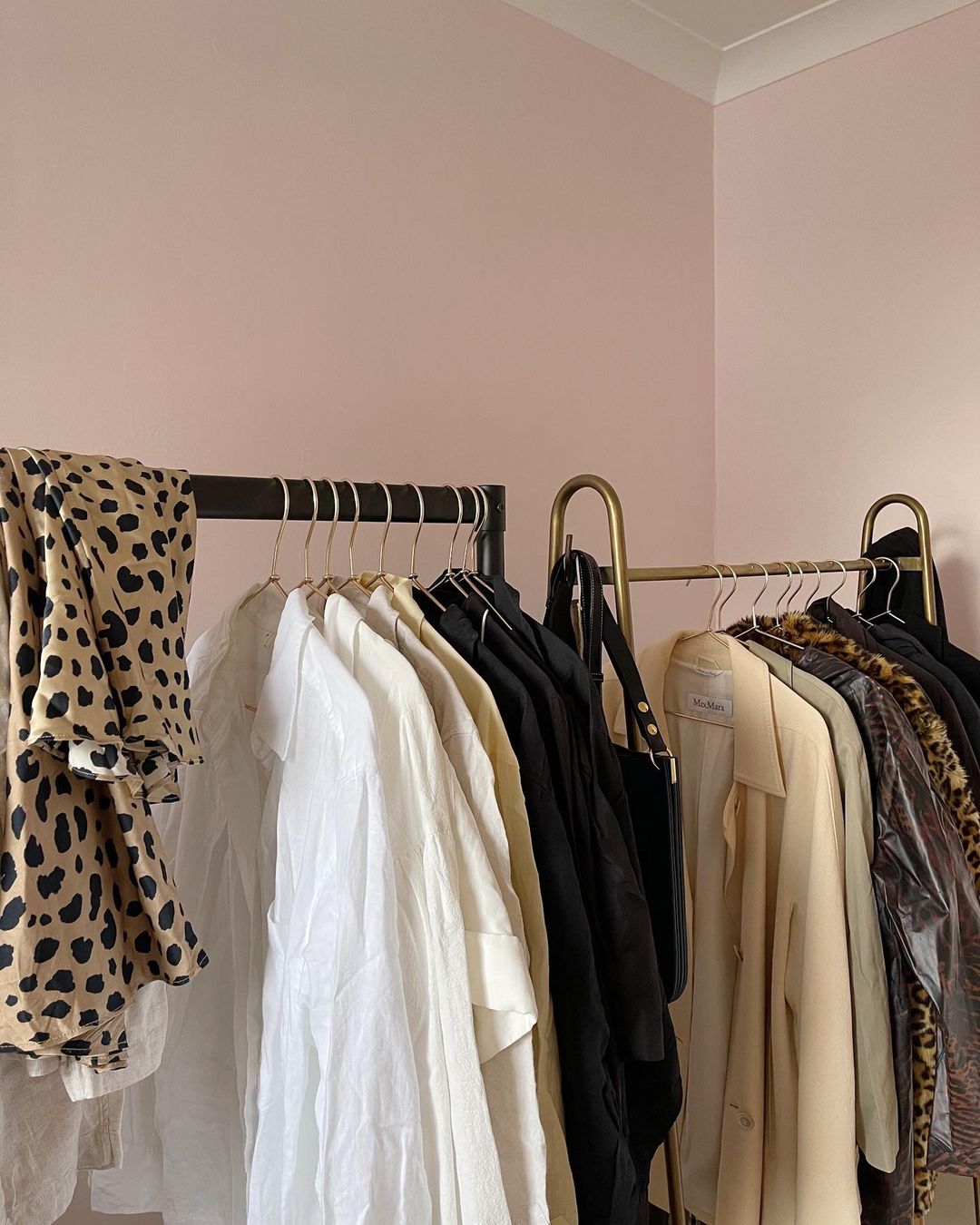
3. Learn the Power of a "Skinny" Hanger
As it turns out, not all hangers are created equally. You probably know that already, becoming disenfranchised with the wirey metal hangers you bought ions ago for your first apartment or stock up on everytime you're at the dry cleaner.
According to Haefelin, "matching hangers—preferably wood or velvet for a sleek look—and clip hangers for skirts or sets" is a "design-forward solution that makes life feel lighter and more beautiful."
More practically, Lucy Mansey (@organisedbylucy), an award-winning home organiser who is often called the Marie Kondo of the United Kingdom, says that "uniform hangers not only create a streamlined look but also maximise closet space". Her bonus tip? "Using transparent garment bags for delicate items can protect them while keeping them visible."

A closet organised by Haefelin and SPIFF.
Spencer also mentions the downfalls of thicker hangers. "[They] look lovely but they take up space."
"I always recommend my clients use velvet hangers and avoid the hanging shelves as they take up more room than the storage they provide!” So, metal or velvet—the choice is yours, but the most important factor to consider is how slim the hanger is.
According to Spencer, it's also worth clearing away unused hangers to avoid clutter. "Remove spares from the wardrobe rail and store them in a basket at the bottom of the wardrobe. Your clothes will hang better, making getting them in and out of the wardrobe easier.”
Shop the Tools:

Use these to hang trousers and blouses.
4. Get Organised to Stay Organised
Ahead of rehanging your pieces, you should identify the bugbears that currently challenge you to stay organised. If you life an incredibly busy life that requires you to travel a lot and live out of suitcases, consider condensing your pieces down to avoid clutter and utilise your most used garments more.
If you live in leggings, consider prioritising these and storing away the more outlandish pieces that you save for a special occasion. Making a checklist of the things you regularly use and love is integral to organising your wardrobe well.
Haefelin explains that there are there are a few popular wardrobe organising methods like "colour coding, categorising by type, or creating capsule collections".
"At SPIFF, we take a customised approach rooted in aesthetics, sustainability, and function. We typically start by categorising—tops, bottoms, dresses—and then arrange by colour within each," she adds. Placement is intentional, with the most-used pieces easily accessible.
"And if something no longer fits your lifestyle or doesn’t bring you happiness, we recommend letting it go. A wardrobe should feel like a reflection of your best self, not a storage unit for the past." Time to bid farewell to a time capsule of clothes...
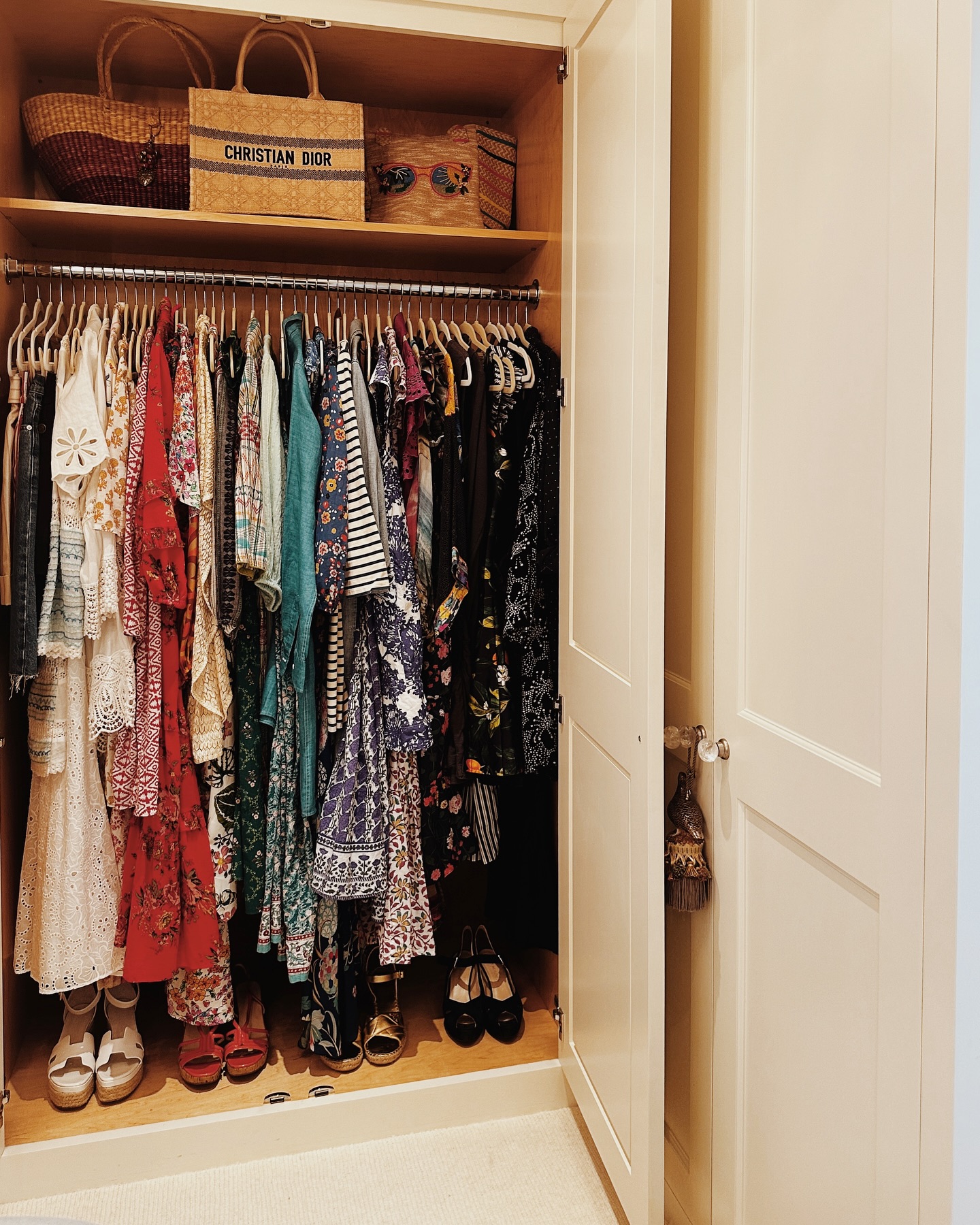
5. Use the "Hanger Method" to Organise Your Wardrobe
I am a visual person and need my clothing hung in front of me to wear it. (I often forget I own something when it’s stored away out of sight!) So, with these organisation experts at my disposal, I asked the question once and for all: How to organise my closet? Ente, the hanging method.
The hanging is the most common and practical wardrobe organisational technique. "The hanger Method advocates for organising clothes by type and colour," Mansey tells me. Haefelin echos this guidance. We always recommend grouping by garment type first—dresses, tops, pants, etc.—and then organising by colour within each category."
It's may seem straightforward and obvious, but it turns out the simplest way to a clean space is the most glaring answer. "This method keeps the closet both functional and visually elevated," Haefelin adds. "Starting with type makes it easier to get dressed and keeps like items together, while the colour order creates a clean, intentional look."
6. Invest in Tubs for Lesser Used Items
"To maintain a uniform wardrobe, I recommend using storage boxes for seasonal items or less frequently used pieces," Mansey says. Founder of Organised by Lucy, her clientele includes the likes of Sophie Habboo, Jamie Lang and Olly Murs, meaning she knows all too well the difficulties of managing large wardrobes.
But irrespective of your wardrobe size, using things like tubs and containers is something everyone can benefit from, says Haefelin. "We also incorporate labelled baskets for categories like graphic tees, hats, or other accessories—this way, even folded or tucked-away items are easy to find. Out of sight should never mean out of mind."
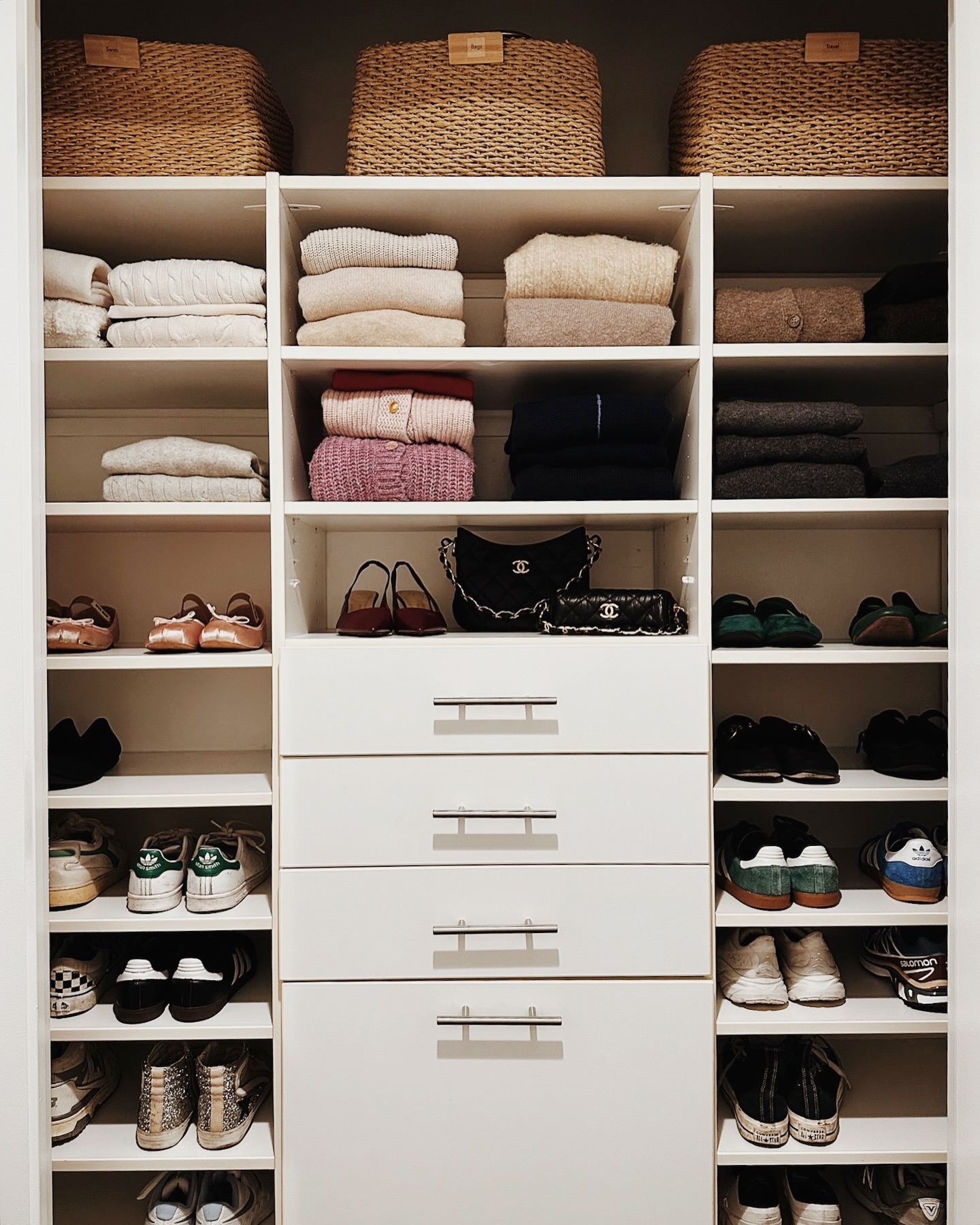
7. Divide Your Winter and Summer Wardrobe
A seasonal switch-up is key to an organised and easy-to-navigate wardrobe. Mansey tells us that "rotating clothes seasonally helps keep to kly the most relevant pieces accessible." Spencer agrees: "Create space by storing clothes you love but can’t wear or off-season garments somewhere else."
Like all top-rated wardrobe organisers, Spencer always uses "the top shelves in a wardrobe for less frequently worn items or for storage". She also recommends baskets for more occasional pieces like knit sweaters and denim shorts. "Make sure you take care of the things you love by folding them and keeping them in baskets or containers so they don’t get dusty. Garments stuffed onto the top shelves make the wardrobe look cluttered and won’t keep your clothes in good condition.”
Zara Home is Hegarty's go-to for this purpose, too. "I also invested in four of their canvas storage boxes that slide under the bed. I stored all my autumn pieces there at the beginning of the summer, and only very recently did I switch over. Now, they contain all my summer pieces.”
Shop the Tools:
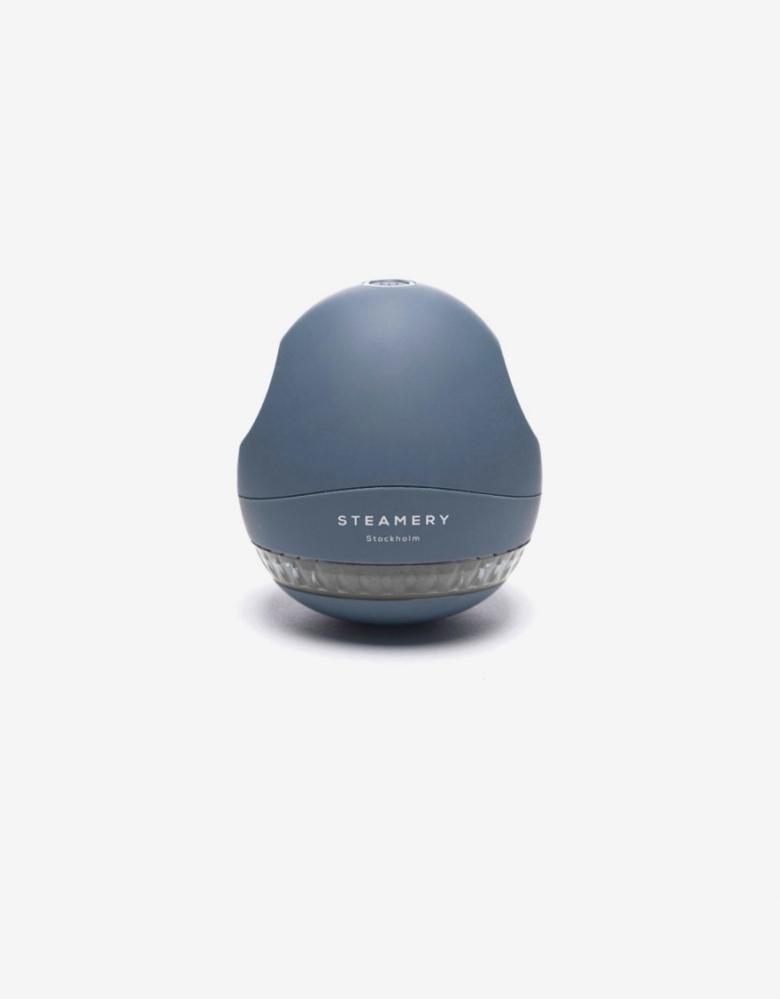
De-bobble your knitwear before you put it in storage so it feels fresh when you take it out at the start of a new season.
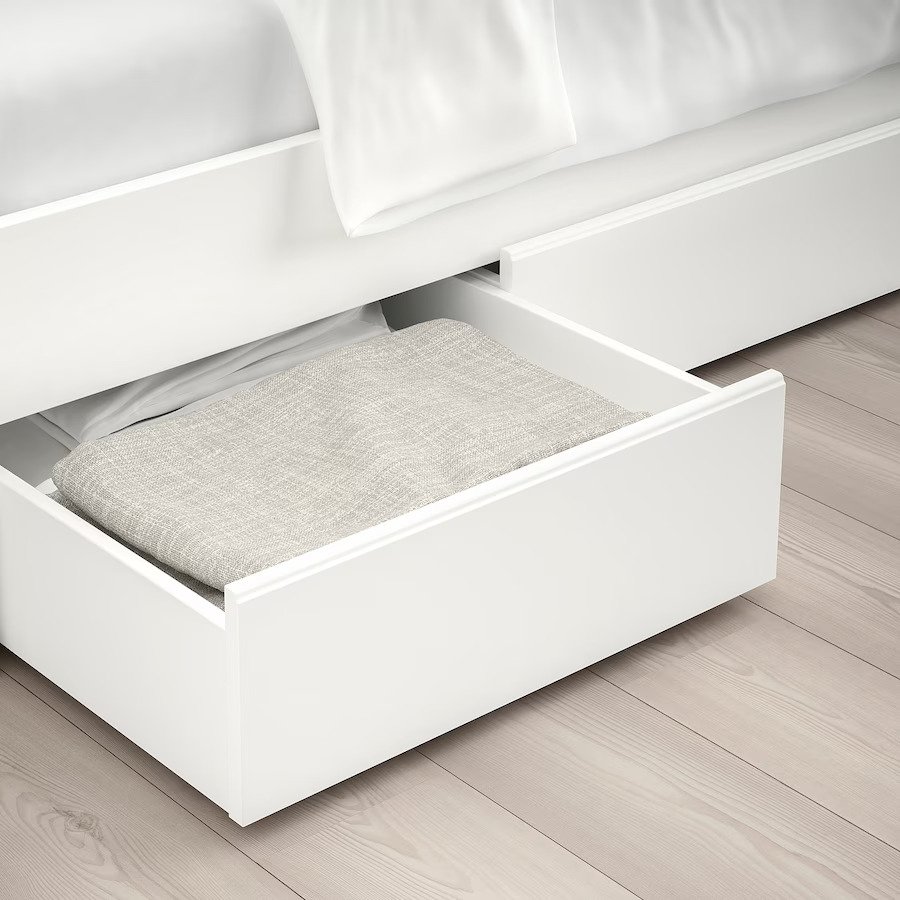
No built-in storage? No worries. "We also love under-bed storage for off-season items and back-of-door systems, which are perfect for shoes, accessories, or overflow," explains Haefelin. "Even the most compact wardrobe can feel elevated and functional with the right layout."
8. Perfect the Art of Folding
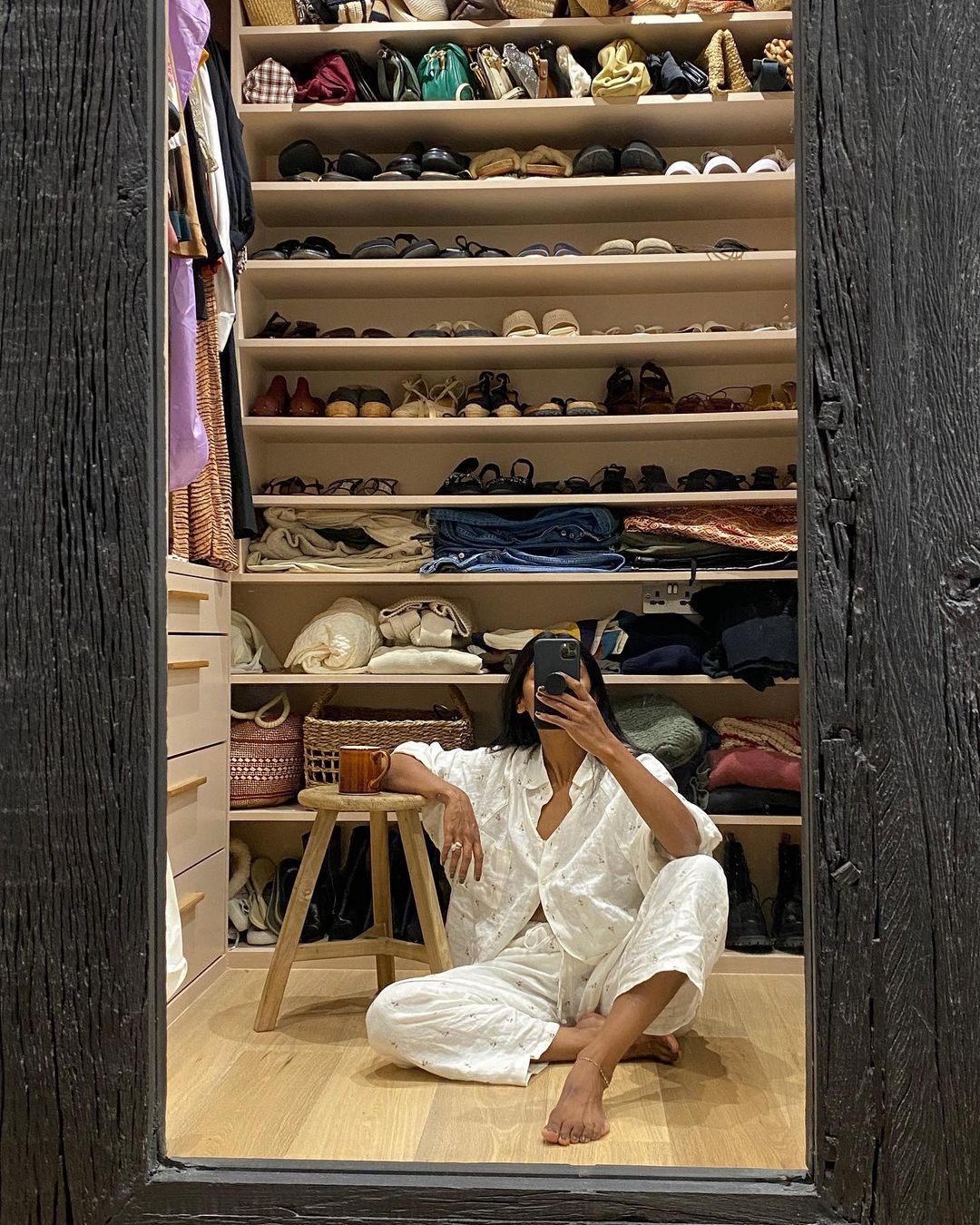
Of course, if you're going to use baskets, you need to know how to maximise every cubic centimetre of the space to your advantage. Spencer's rule of thumb is to only hang what you need to".
"Jeans and jumpers are better folded. I hang lightweight, flimsy items like blouses, dresses, skirts and jackets.”
Thick knitwear, in particular, is better kept folded neatly in drawers to prevent it from losing its shape. "I hang my slimmer knitwear with my other tops,” Joanne tells me. "And the chunky ones that are too big to hang get folded up into drawers that are easy to access. I always send my favourite knits and coats off for a dry clean before the new season begins to keep them looking fresh, and I regularly comb my favourite cashmeres to eliminate pilling. Total Wardrobe Care is another favourite of mine for natural moth-repellent goods and storage bags for jumpers.”
9. Don't Forget to Use the Bottom of Your Wardrobe Either
Utilise every space by investing in shelving or a drawer unit to go at the bottom of the wardrobe. "This is often a dumping ground, and it’s usable space if you find the right storage," Spencer says.
Shop the Tools:
10. Sweat the Small Stuff
Tinier items can gain from more bespoke storage solutions. "Use drawer dividers for underwear to keep them neat," explains Mansey. As for the accessories? "I have a separate shelving section for bags and shoes,” says Hegarty. "For jewellery, I store everything in drawers in stackable trays, this way, nothing gets knotted up or lost.”
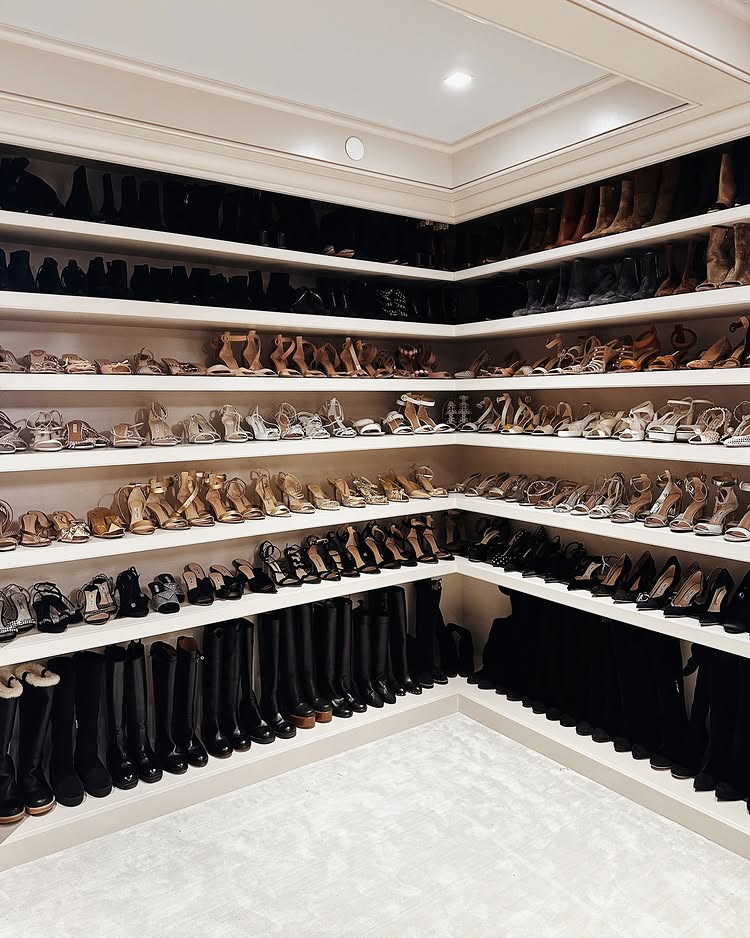
Shop the Tools:
11. If Sharing with a Partner, Colour Code Everything
In metropolitan cities like London and New York, bedrooms and closets are often very small. This is only compounded when you share the space with a partner. If that's the case, fear not. Like me, I promised to split the closet space 50/50 with my boyfriend. While I have certainly taken advantage of this (it's more 70/30 in my favour), I sometimes feel an overwhelming sense of claustrophobia seeing his pieces stocked with mine. But according to Haefelin, there's a very viable workaround here.
"When sharing a wardrobe, the best approach is to designate one side to each person. This creates a natural structure and helps avoid overlap. To maintain cohesion, use matching hangers and consistent materials throughout. Maximise vertical space with double rods and labelled baskets, and if room allows, a shared back-of-door unit is perfect for storing shoes or accessories like hats and belts."
Sydney-born, London-based journalist Ava Gilchrist isBest Knockoff Luxury Clothing UK's SEO Writer. An authority on all things style, celebrity and search related, she produces insightful fashion features, first-person clothing reviews, talent profiles and comprehensive trend reports chronicling Wholesale Replica Bag happenings from the runways, zeitgeist and red carpet. In her spare time, she can be found trawling vintage boutiques and hunting down the city's best dirty martini.

